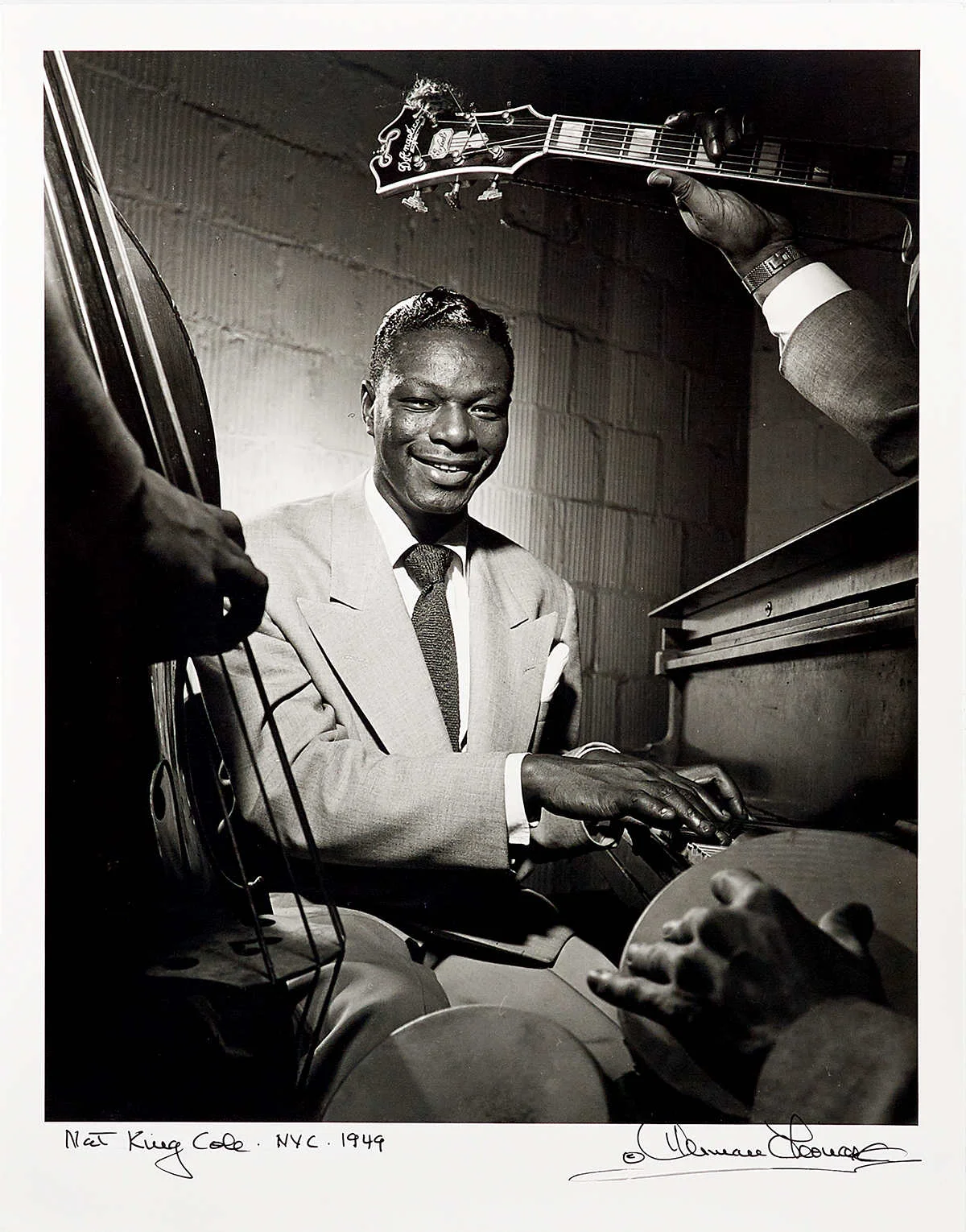Jazz Age Revisited
LiveAuctionTalk.com
Photo courtesy of New Orleans Auction Galleries.
Herman Leonard’s love of jazz and photography brought him to New York’s Greenwich Village in 1948 where he setup a small studio. He offered to shoot publicity stills for musicians in exchange for a ticket into the smoke-filled nightclubs of Broadway, 52nd Street and Harlem.
“When I walked into a jazz club, I was fascinated by the atmosphere, in general. I wanted to make, yes, individual pictures of the musicians I admired a great deal, but I also wanted to record the scene so that later on, if I looked at that picture, it brought back the memory, even the feeling or the smells of that night.”
The fast-paced changes and complex rhythms and melodies of bebop music was predominant during the era. It flowed through the sax playing of Stan Getz, Dexter Gordon and Charlie “Bird” Parker. It echoed through the trumpet of Dizzy Gillespie and the guitar playing of Barney Kessel and in the arrangements of Gil Evans among others.
The sound was unpopular among big band swing fans because it was fast, loud, furious and unsuited for dancing.
“When I walked into a jazz club, I was fascinated by the atmosphere, in general. I wanted to make, yes, individual pictures of the musicians I admired a great deal, but I also wanted to record the scene so that later on, if I looked at that picture, it brought back the memory, even the feeling or the smells of that night,” he said.
Bebop was the music of people who knew discrimination and bigotry firsthand. As a Jew growing up in Allentown, Pa., Leonard could relate.
Modern jazz developed from the bebop movement. Dexter Gordon in particular had a wild, freewheeling sound that was foreign to most mainstream Americans in the 1950s. Bebop put instruments and especially horns at the center of the music.
Leonard was there with his camera at Birdland and the Royal Roost to capture much of the hothouse club atmosphere on film. It also gave him a chance to befriend jazz greats like Miles Davis, Dizzy Gillespie, Charlie Parker, Lena Horne, Billie Holiday, and Louis Armstrong.
He said he wasn’t aware at the time of how important these musicians were or how legendary they would become. Many of his photos ended up on Jazz albums as well as in Downbeat and Metronome magazines.
In addition to photographing the city’s dancers, musicians and actors, Leonard also worked for Life, Esquire, Look, Cosmopolitan, and Playboy.
His dramatically lit images of Nat King Cole, Miles Davis, Billie Holiday, Charlie Parker, and Duke Ellington in the 1940s and 50s immortalized the artists and the clubs on 52nd Street. Smoke in the foreground of his photos was his trademark.
“You know you meet special people, creative people like a Duke Ellington. Duke was the Beethoven of jazz or the Bach. Dizzy was the clown and the musical genius. [But] Miles Davis was a profound intense intellectual jazz musician. I call Miles the Picasso of jazz because of the various stages that he went through in his creative career,” he said.
Leonard died on Aug. 14, 2010, in Los Angeles, CA. He was 87.
On July 28, 2019, New Orleans Auction Galleries featured a selection of Leonard’s photos in its sale.
Here are some current values.
Herman Leonard Silver Gelatin Prints
Nat King Cole and Cannonball Adderley; 2 photos; signed, titled and dated; NYC 1956; printed circa 1990; 14 inches by 11 inches; $1,000.
Dexter Gordon and Chet Baker; 2 photos; signed, titled and dated; NYC 1948; printed circa 1990; 14 inches by 11 inches; $2,250.
Dr. John; signed and titled; San Francisco, 1989; 20 inches by 16 inches; $3,500.
Doc Cheatham; Cheatham with Nicholas Payton; and Palm Court Café, New Orleans; 3 photos; signed, titled and dated; 1996-97; 20 inches by 16 inches; 14 inches by 11 inches; $4,000.






